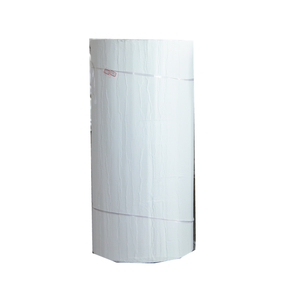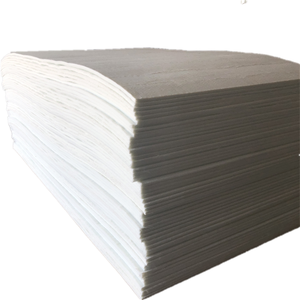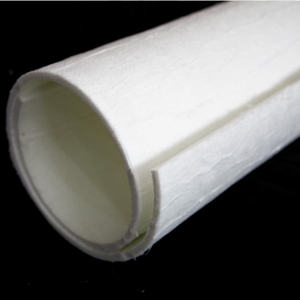Overview of Nanoporous Flexible Aerogel Thermal Insulation Blanket
Aerogels are ultralight, highly porous materials known for their exceptional insulation properties, remarkable low density, and incredible strength-to-weight ratios. Often referred to as “frozen smoke” due to their ethereal appearance, aerogels are produced by replacing the liquid component of a gel with gas, typically through supercritical drying, which avoids collapse of the gel structure. Composed primarily of air (up to 99.98%), these materials exhibit a wide array of unique characteristics that make them valuable across various industries.
Features of Nanoporous Flexible Aerogel Thermal Insulation Blanket
-
Extremely Low Density: Aerogels are some of the world’s lightest solids, with densities as low as 0.001 grams per cubic centimeter.
-
Superb Insulation: They possess extremely low thermal conductivity, making them among the best insulators known to man, effective at temperatures from -270°C to 1,000°C.
-
High Porosity: With a porous structure that can reach up to 99.9%, aerogels have an incredibly large internal surface area, enhancing their functionality in absorption and catalysis applications.
-
Translucent to Transparent: Depending on their composition, aerogels can transmit light, giving them a unique semi-transparent or transparent appearance.
-
Mechanical Strength: Despite their fragile appearance, aerogels can be engineered to possess significant mechanical strength, capable of bearing considerable weight.
-
Chemically Inert: Many aerogels are chemically stable and resistant to corrosion, making them suitable for harsh environments.

(Nanoporous Flexible Aerogel Thermal Insulation Blanket)
Parameters of Nanoporous Flexible Aerogel Thermal Insulation Blanket
The Nanoporous Flexible Aerogel Thermal Insulation Blanket is an advanced thermal insulation product designed for use in high-temperature environments such as air ducts and underground tunnels. This blanket is made from highly durable and lightweight nanoporous material that provides excellent thermal insulation properties while being flexible enough to be applied in tight spaces.
The Nanoporous Flexible Aerogel Thermal Insulation Blanket includes several key parameters that affect its performance. The first parameter, thickness, determines the level of insulation required for the blanket to provide sufficient heat protection for the surrounding environment. The thickness of the blanket is typically around 15mm to 20mm and can range from 5mm to 10mm. This allows the blanket to trap heat effectively without absorbing too much moisture or reducing its overall thermal conductivity.
Another important parameter is the shape of the blanket. The blanket should have a smooth surface with corners tightly packed together, which helps prevent direct contact between the foil and the during heating. Additionally, it should be able to withstand temperature changes of up to 40°C without any damage or degradation.
The final parameter, weight, also plays a crucial role in determining the effectiveness of the Nanoporous Flexible Aerogel Thermal Insulation Blanket. A blanket with a heavy weight will not provide adequate insulation while still maintaining good thermal conductivity. Therefore, designers need to consider factors such as the thickness and shape of the blanket when choosing the appropriate weight for their application.
Overall, the Nanoporous Flexible Aerogel Thermal Insulation Blanket offers exceptional thermal insulation properties while being highly flexible and durable. Its versatility makes it a popular choice for applications where low thermal conductivity is necessary and/or when high temperatures are encountered. With its proven performance, this product is sure to provide long-term heat protection in high-temperature environments.

(Nanoporous Flexible Aerogel Thermal Insulation Blanket)
Applications of Nanoporous Flexible Aerogel Thermal Insulation Blanket
-
Thermal Insulation: Used in aerospace for spacecraft insulation, and in commercial and residential buildings for energy-efficient windows and insulation materials.
-
Environmental Remediation: Aerogels’ high surface area makes them effective in absorbing pollutants like oil spills and heavy metals from water.
-
Sound Absorption: Their porous structure absorbs sound waves effectively, making them useful in noise reduction applications.
-
Electronics: Aerogels’ low thermal conductivity and electrical insulation properties find applications in semiconductor and battery technology.
-
Optics and Photonics: Translucent aerogels are used in optical devices, light-guiding structures, and as filters.
-
Drug Delivery: The high surface area can be utilized for controlled drug release, making aerogels candidates for advanced medical applications.
Company Profile
Graphne Aerogels is a trusted global chemical material supplier & manufacturer with over 12-year-experience in providing super high-quality aerogel and graphene products.
The company has a professional technical department and Quality Supervision Department, a well-equipped laboratory, and equipped with advanced testing equipment and after-sales customer service center.
If you are looking for high-quality graphene, aerogel and relative products, please feel free to contact us or click on the needed products to send an inquiry.
Payment Methods
L/C, T/T, Western Union, Paypal, Credit Card etc.
Shipment
It could be shipped by sea, by air, or by reveal ASAP as soon as repayment receipt.
FAQs of Nanoporous Flexible Aerogel Thermal Insulation Blanket
Q: Is Nanoporous Flexible Aerogel Thermal Insulation Blanket fragile?
A: Traditional aerogels are brittle and fragile; however, advancements have led to the development of “flexible” or “rigid” aerogels that maintain their unique properties while being more durable.
Q: How is Nanoporous Flexible Aerogel Thermal Insulation Blanket made?
A: Nanoporous Flexible Aerogel Thermal Insulation Blanket is synthesized by replacing the liquid in a gel with gas without causing the structure to collapse. This is typically achieved through supercritical drying, where the solvent is converted to a supercritical state, allowing it to evaporate without forming liquid-gas interfaces that could damage the gel structure.
Q: Is Nanoporous Flexible Aerogel Thermal Insulation Blanket expensive?
A: Historically, aerogels have been costly due to their complex manufacturing process. However, with technological advancements and economies of scale, costs are gradually decreasing.
Q: Can Nanoporous Flexible Aerogel Thermal Insulation Blanket conduct electricity?
A: Most aerogels are poor conductors of electricity due to their porous, insulating nature. However, certain metal-oxide aerogels can display semiconducting or even conducting properties.
Q: Is Nanoporous Flexible Aerogel Thermal Insulation Blanket environmentally friendly?
A: Aerogels themselves do not pose environmental hazards, and their use in insulation can reduce energy consumption. However, the production process may involve chemicals that require careful handling and disposal.

(Nanoporous Flexible Aerogel Thermal Insulation Blanket)






